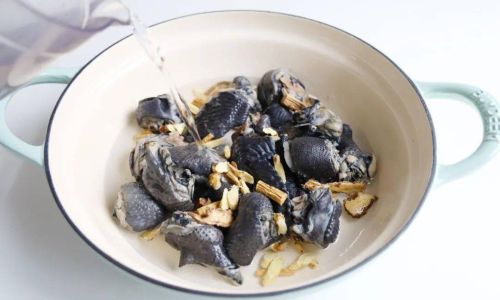Introduction
Chicken wings are a beloved culinary delight enjoyed by people across the globe, whether they are baked, grilled, fried, or prepared in a myriad of other ways. Their versatility and rich flavor make them a staple in many households and restaurants. When opting for convenience and longer shelf life, frozen chicken wings become an excellent choice. However, selecting high-quality frozen chicken wings can be a daunting task, especially with the myriad of options available in the market. This guide aims to provide comprehensive insights into how to pick the best frozen chicken wings, ensuring that your culinary endeavors yield delicious and safe results.

Understanding the Types of Chicken Wings
Before diving into the selection process, it’s crucial to understand the different types of chicken wings available. Chicken wings are generally divided into three sections: the wing tip, the flat (or wingette), and the drumette. Most consumers prefer to buy whole wings, which include the drumette and the flat, often sold together and sometimes with or without the wing tip attached. The drumette resembles a small drumstick and is meatier, while the flat is flatter and contains two bones with less meat but a skin surface ideal for crisping.
Check the Label for Information
When shopping for frozen chicken wings, the first step is to scrutinize the label. This might seem obvious, but the information printed on the packaging can tell you a lot about the product’s quality and safety.
- Country of Origin: Knowing where the chicken wings come from can give you an indication of their quality standards. Some countries have stricter regulations regarding animal welfare, feed, and antibiotic use.
- Inspection and Certification: Look for labels indicating that the product has been inspected and approved by relevant food safety authorities. In the United States, for instance, this would be the USDA (United States Department of Agriculture) inspection mark.
- Ingredients List: A clean ingredients list is a sign of high quality. Ideally, the only ingredient listed should be chicken wings. Avoid products with added preservatives, flavors, or marinades if you plan to season them yourself.
- Storage Instructions: Pay attention to the recommended storage conditions and use-by dates to ensure you handle the product correctly and consume it before it spoils.
Appearance and Packaging
The visual aspect of the packaging and the wings themselves can provide valuable clues about their freshness and quality.

- Packaging Integrity: Ensure the packaging is intact and free from tears, punctures, or frostburn (white spots caused by freezer burn). These signs can indicate that the product has been thawed and refrozen or has been improperly stored, leading to potential quality degradation.
- Color and Texture: Through the transparent packaging, look for wings that have a uniform, pale pinkish-white color with no dark spots or discoloration. The skin should appear slightly moist but not slimy. Avoid wings that look dried out or have a dull appearance.
- Frost Coverage: A light frost on the wings is normal and indicates they have been quickly frozen to preserve freshness. However, excessive frost can be a sign of prolonged freezer storage, which might affect texture and flavor.
Smell the Wings (If Possible)
While it might not always be feasible to open the packaging and smell the wings directly in a retail setting, if you have the opportunity, doing so can provide additional insights. Fresh, high-quality frozen chicken wings should have a mild, slightly sweet scent. Any strong, unpleasant odors, such as ammonia or sourness, are indicators of spoilage and should be avoided.
Consider the Brand and Source
Reputation matters when it comes to food products. Choosing well-known brands or those recommended by trusted sources can increase the likelihood of purchasing high-quality chicken wings. Researching brands beforehand can help you identify those committed to sustainable farming practices, ethical treatment of animals, and strict quality control measures.
Reading Reviews and Asking Questions
In the digital age, customer reviews are a treasure trove of information. Reading reviews on online platforms can give you insights into other consumers’ experiences with specific brands or products. Pay attention to recurring themes in the reviews, such as freshness, taste, packaging quality, and customer service.

If shopping in a physical store, don’t hesitate to ask store staff about the source of their chicken wings, how long they’ve been in stock, and if there have been any customer complaints. Knowledgeable staff can be a valuable resource in making an informed decision.
Understanding Freezing and Thawing Processes
Once you’ve selected your chicken wings, proper handling during thawing and preparation is crucial to maintain quality. Always thaw frozen chicken wings in the refrigerator, never at room temperature or in hot water, to prevent bacterial growth. Depending on their size and the refrigerator’s temperature, thawing can take anywhere from 12 to 24 hours.
Once thawed, if you’re not ready to cook immediately, you can refreeze the wings once without significantly compromising their quality, but it’s best to avoid multiple freeze-thaw cycles.
Preparing and Cooking the Wings
Proper cooking techniques can elevate even the best-selected chicken wings. Ensure you cook them to an internal temperature of 165°F (75°C) to kill any potential bacteria and achieve a juicy, flavorful result. Whether you’re baking, frying, grilling, or using a slow cooker, monitoring cooking time and temperature is key.

Marinating the wings before cooking can add layers of flavor, but be mindful of the marinade’s ingredients and ensure it doesn’t contain high levels of sugar or salt, which can lead to burning or over-seasoning.
Conclusion
Selecting high-quality frozen chicken wings involves a combination of careful inspection, understanding labels, and considering the brand’s reputation. By following the guidelines outlined in this article, you can ensure that your frozen chicken wings are not only safe to consume but also deliver the delicious taste and texture you crave. Remember, the journey from farm to table is a multi-step process, and each step, from sourcing and freezing to thawing and cooking, plays a vital role in determining the final quality of your dish. Happy cooking!






0 comments